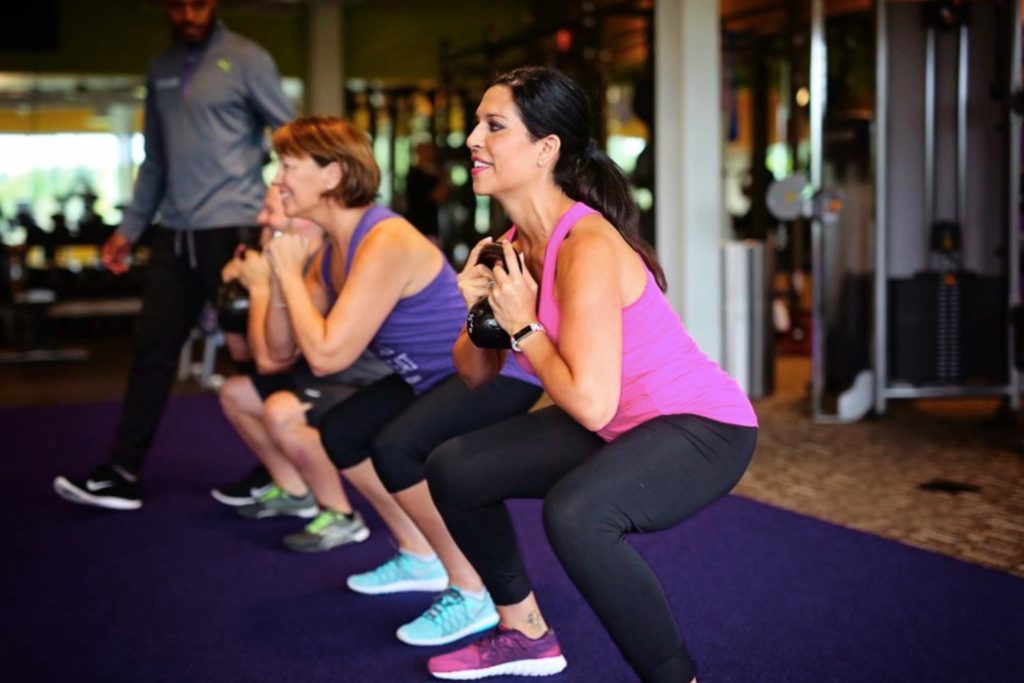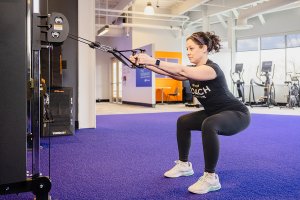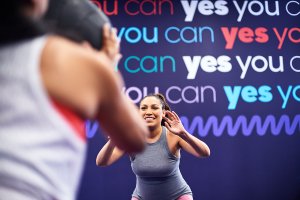Functional fitness training is a type of strength training that readies your body for daily activities. These exercises equip you for the most important type of physical fitness, the kind that preps you for real-life, daily living stuff like bending, twisting, lifting, loading, pushing, pulling, squatting and hauling. Most functional fitness contains multi-joint movement patterns that involve your knees, hips, spine, elbows, wrists, and shoulders, which all build strength and improve your range of motion. It all comes down to being practical, but don’t mistake that for boring.
What Functional Fitness Training Isn’t
While all forms of exercise benefit daily functioning, not all forms of exercise fit into the functional fitness definition. For instance, a bench press is not considered a functional fitness exercise because it’s not an everyday movement for most people…unless you’re Christian Bale in Batman Begins and have to hoist a burning beam to save Wayne Manor, there aren’t many practical applications for a bench press.
It’s also not using your own body weight to pry a door open with your shoulder (a recipe for disaster we have all cooked up at least once) and you’ll notice nothing like that is the type of exercise we include in our functional fitness training program below. It’s more about using your head in everyday activities, and the best muscles for the job, rather than brute force. Especially for older adults who really need to be mindful of good form.
So, What Is Functional Fitness Training?
A great example of one of the best functional fitness exercises would be a simple squat. How often do you squat to get into your car? To use the bathroom? To sit down and stand up? According to our definition of functional training: a squat may arguably be THE most functional strength training movement.
Why Should I Try Functional Fitness Training?
Increased Balance and Stability
There are plenty of things in life that can throw off your balance or stability. It’s a good idea to work toward mitigating these things in the gym to prepare yourself for the outside world. As we always tell our clients, a truly fit lifestyle is not about how fit we look, it’s about how fit we live. What good is working out if it doesn’t prepare us and strengthen us for everyday activities?
One functional exercise that increases stability is a lunge with a shoulder press. If you ever find yourself reaching for a box on a shelf, then moonwalking away, arms aloft, until you can pivot and find a spot to place the box, you’ll be glad you practiced this exercise.
Increased Strength
Functional exercises increase your overall strength. This is because most functional movement can improve your core and stability. The more stable your foundation, the stronger you are.
Most exercises on machines serve a great purpose and isolate muscle groups. This is excellent for building muscle mass, but if you want to increase your strength, it’s a good idea to engage in a training program that builds all the stability muscles.
We rarely use just one of our muscle groups in isolation during our daily activities. As an example, if you’re shoveling dirt in a flower bed, you’re not just using your biceps to move the shovel, you’re using both your upper body and lower body…your legs (quads) to push the shovel into the dirt, your lower back to bend over, and your shoulders, and abs to lift, then throw the dirt.
Decreased Risk of Injury
Functional exercises can greatly decrease your risk of everyday life injuries. In our collective experience as fitness professionals, we have never seen clients injured using proper form on a deadlift or a squat. We have, however, seen plenty of clients injured by picking up their kids, a potted plant, or lifting soil bags, then throwing out their back. (Just ask any physical therapist.)
These everyday life activities can injure your smaller muscles when you least expect it. A great exercise to equip you for these functional movements is a Lateral Shuffle Bar Pickup (see description below). This will help you train for the simple motion of picking something up off the floor or a table, and setting it aside.
How to Incorporate Functional Fitness
We like to make sure functional fitness exercises are part of every workout. We’ll either add some to a typical gym workout or create an entire plan using functional exercises, like the one below. But on those days when you can’t get to the gym, you can do lots of these exercises using just your body. This type of training isn’t high intensity. (You could be doing any number of these moves while on a call if you’re working from home!) You already know many functional fitness exercises, and if you need a prop or two, you can use what you already have around the house like soup cans for bicep curls, pull-ups on a door jam (or pull-ups using that pull-up bar in the basement, because many of our clients have them and consequently, they’re really good at pull-ups!) Or according to the Mayo Clinic, simple lunges, squats, and push-ups will do the trick, and who’s gonna argue with the Mayo Clinic? But, of course, we’d love to see you live and in person, when it works, to do the following:
Full-Body Functional Fitness Workout

Here’s a full body workout using functional fitness exercises, enjoy!
NOTE: Take care to follow the instructions around good form for each functional training exercise. Because the best way to be functional is to be injury free.
- 3 sets of 15 squat-to-shoulder press
This functional training exercise can be done with a barbell or dumbbells. Stand with your feet shoulder-width apart and place them firmly on the floor. Squat to grasp the dumbbells or barbell, and with a tight core and your face forward, move to a standing position and extend the dumbbells/barbell above your head. Remember to keep the dumbbells/barbell close to your shoulders as you squat and press up at the top of each squat. - 3 sets of 12 lunge-to-shoulder press with kettlebell (each leg and shoulder)
Core balance is key on this one. With both feet hip-width apart on the floor, lunge forward on your right foot and press your right hand (holding the kettlebell) up at the same time. Make sure to move slowly so that you can keep your balance. Do 12 reps then switch to your left hand and left foot. Engage your core, and press up at the top of each lunge. Start with little weight until you get the hang of this one. - 3 sets of 12 suitcase deadlifts (each side)
With your feet firmly planted on the floor, squat to grasp the barbell with your right hand, then straighten your legs to stand. Do 12 reps then switch to your left hand. Engage your core as you stand up and press your hips forward as your body fully extends. - 3 sets of 12 single-armed cable row
It helps to bend the knees for balance on this functional training exercise. The unilateral (one arm) version actually helps engage the muscles better than the bilateral (two arm) version, so right out of the chute you’re getting stronger! Remember to keep yourself from leaning forward or backward. Engage your core and squeeze your shoulder blades together as they contract. - 3 sets of 20 sumo high pull with kettlebell
Assume a sumo wrestler starting position, stepping out to each side with both your right foot and left foot wider than each shoulder, keep your butt lower than your back, your core engaged, and pull the kettlebell up at the top of each squat. Don’t let your elbows go higher than your shoulders to protect your neck and upper back. - 3 one-minute rounds of lateral shuffle bar pickup
To begin this functional training exercise, lay the body bar or barbell on the floor, pick it up, and shuffle two steps to the side before placing it down. Repeat. Keep your core tight on the squat to protect your back. You might not know it but this is a cardio activity as well, so make sure to give it your all out best for the full minute of your set.



